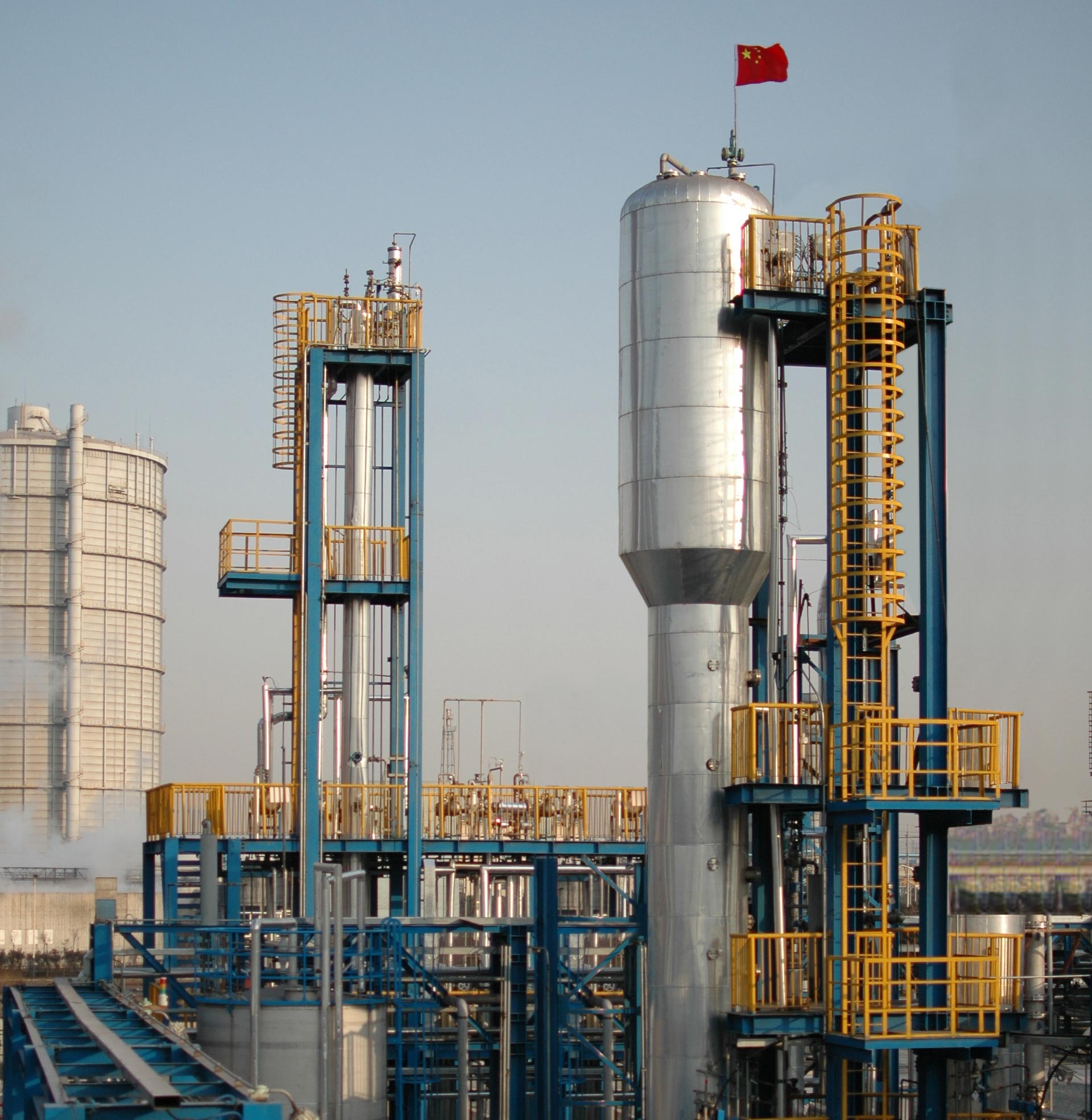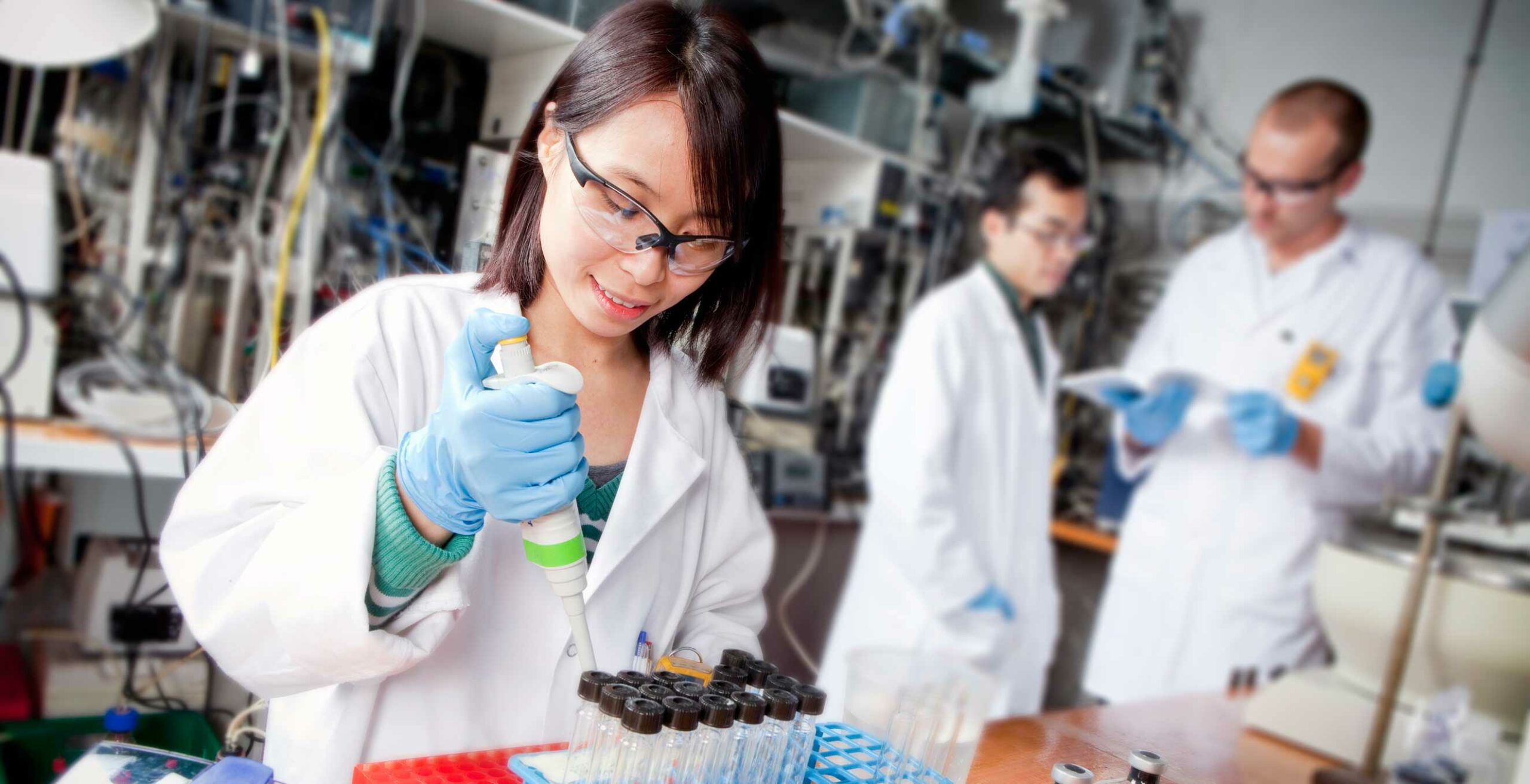Innovators in the fields of fuel, steel and aviation reveal how a low-carbon jet fuel made with steel process gases could revolutionise air travel
The future of aviation is being fuelled by old-school technology. Four billion years old to be precise. Scientists are now creating cutting-edge jet fuel with microbes that transform carbon to ethanol in a process almost as old as the Earth itself.
The ethanol is converted to a low-carbon, environmentally friendlier aviation fuel that could one day fulfil around one-fifth of the airline industry’s global requirements.
Leading this charge is clean tech company LanzaTech, which will supply Virgin Atlantic with its fuel if a test flight proposed for this year proves successful.
But this collaboration could never have got off the ground without LanzaTech first forging partnerships with steel companies, including China Baowu Steel Group in Shanghai and Shougang Steel near Beijing. For LanzaTech’s fuel, called Lanzanol, is produced in a process that recycles carbon-rich gases from steel mills to create the ethanol base of its fuel.
“We can now imagine a world where a steel mill can not only produce the steel for the components of the plane, but also recycle its gases to produce the fuel that powers the aircraft”
Dr Jennifer Holmgren
Virgin Atlantic founder Sir Richard Branson says: “This is a real game-changer for aviation and could significantly reduce the industry’s reliance on oil within our lifetime.
“Our understanding of low-carbon fuels has developed rapidly over the last decade, and we are closer than ever before to bringing a sustainable product to the market for commercial use by Virgin Atlantic and other global airlines.”
LanzaTech experts reckon that the Lanzanol fuel formula offers a 50-70% reduction in greenhouse gas emissions compared to conventional petroleum gasoline. Some 150 million tonnes of CO2 emissions could be cut worldwide if steel production process gases alone were used to manufacture the ethanol.
LanzaTech CEO Dr Jennifer Holmgren says: “We can now truly imagine a world where a steel mill cannot only produce the steel for the components of the plane, but also recycle its gases to produce the fuel that powers the aircraft.”
The China Baowu Steel Group-Lanzatech partnership was able to produce more than 450,000 litres of Lanzanol per year from a single site in Shanghai, China, which could then be converted to make 225,000 litres of jet fuel. Even this experimental demonstration site was able to produce enough fuel for an aircraft to make the trip from Shanghai to London, with greater output expected from commercial production installations.
 The China Baowu Steel Group factory testing site in Shanghai, China
The China Baowu Steel Group factory testing site in Shanghai, China
Indeed, the commercial potential seems huge. LanzaTech experts calculate they could ‘retrofit’ the technique to around two-thirds of all the steel plants on the planet.
If so, that would mean up to around 136 billion litres of ethanol could be manufactured worldwide every year, from which 68 billion litres of aviation fuel would be produced (in the process half a litre of fuel is created for every litre of ethanol).
This figure amounts to a little less than 19 per cent of all jet fuel expended annually – 360 billion litres.
Some steel giants are already envisioning the potential and making headway in this developing bioeconomy.
ArcelorMittal, the world’s largest steel maker and a development partner with LanzaTech, is building an €87m pilot plant at its steel facility in Ghent, Belgium, to produce ethanol on a commercial basis.
The company says that for every tonne of ethanol produced, total CO2 emissions would be cut by 2.3 tonnes, and that the ethanol process would displace eight barrels – one tonne – of gasoline.
 The Lanzatech laboratory in Illinois, US
The Lanzatech laboratory in Illinois, US
And all this from a humble microbe that began creating ethanol some four billion years ago, in the Hadean era when Earth was, in geological terms, a mere infant of just 500 million years or thereabouts.
In the Hadean age, micro-organisms from the acetogen family used gas emissions produced from naturally occurring hydrothermal vents to grow. These gas-fermenting organisms are some of Earth’s earliest life forms and their method of using gas for their whole life cycle is one of the oldest biological reactions on the planet.
Now LanzaTech scientists have plucked this primordial ‘technology’ from our far-distant past to create a fuel of the future. Their proprietary microbe is also from the acetogen family. The Lanzanol technique mimics that biological reaction from the beginning of time, as steel production gas emissions are comparable to gas emissions from hydrothermal vents.
“Our understanding of low-carbon fuels has developed rapidly over the last decade, and we are closer than ever before to bringing a sustainable product to the market”
Richard Branson
During the process, carbon-heavy process gas streams enter a fermentation bioreactor. Here microbes feed on the gas, creating as a byproduct the ethanol that is then converted to jet fuel.
In a recent milestone, a 6,800-litre batch of jet fuel was created from Lanzanol at a Beijing demonstration facility co-owned with Shougang, one of China’s largest steel makers.
Success in creating such a quantity, considered a breakthrough in the journey towards commercial production, is exciting the bioeconomic world. Now the fuel must undergo more tests required by aircraft and engine makers before it is approved for regular use on commercial flights.
Says CEO Jennifer Holmgren of LanzaTech’s fuel production milestone: “The importance of our ability to make the fuel in that quantity is firstly that it shows we’re ‘out of the lab’, that the production potential is starting to look real.
“Secondly, we are making enough for the testing that’s required for certification by the relevant authorities so we can really move forward.”
“In the next 30 years it’s unlikely that we will be flying electric aircraft so this use of recycled carbon from steel production to power aviation is really important and exciting”
Dr Jennifer Holmgren
Holmgren certainly does not claim Lanzanol is the sole future of jet fuel, but she sees it as a significant component of a “basket of solutions” to wean the world off fossils. Indeed, while the world awaits a potential electric solution for jet power, Lanzanol is firmly fitting the bill.
“In the next 30 years it’s unlikely that we will be flying electric aircraft so this use of recycled carbon from steel production to power aviation is really important and exciting,” explains Holmgren.
“Jet fuel derived from ethanol is what the world needs now – less carbon pollution, and greenhouse gas being diverted into something useful.
“I don’t think LanzaTech jet fuel is going to be the whole story, as we need many alternative fuel solutions. But I think we can contribute billions of gallons of jet fuel to the aviation industry.
“My goal is that in under 10 years I want to be able to supply [four billion to nine billion litres] per year of fuel that is competitive with the long-term average price of petroleum.’
This vision is clearly in step with those forward-thinking airlines that are addressing the environmental issues generated by fossil fuels. Virgin Atlantic has pledged to reduce its aircraft CO2 emissions by 30% from 2007 to 2020. To date it has cut emissions by 9%, and senior executives therefore acknowledge they have a battle on their hands to hit their green objectives.
As Virgin Atlantic Head of Sustainability Dr Emma Harvey puts it: “Our single, biggest environmental issue is the carbon emissions associated with our aircraft fuel use. This pretty much dwarfs everything else we do. It’s clear what the priority is and we have a responsibility to address it.”
It is indeed a huge responsibility, but with LanzaTech’s collaboration with steel companies, the advances in the battle for sustainability in the air, seem far from being pie in the sky.
Images: Lanzatech, Getty